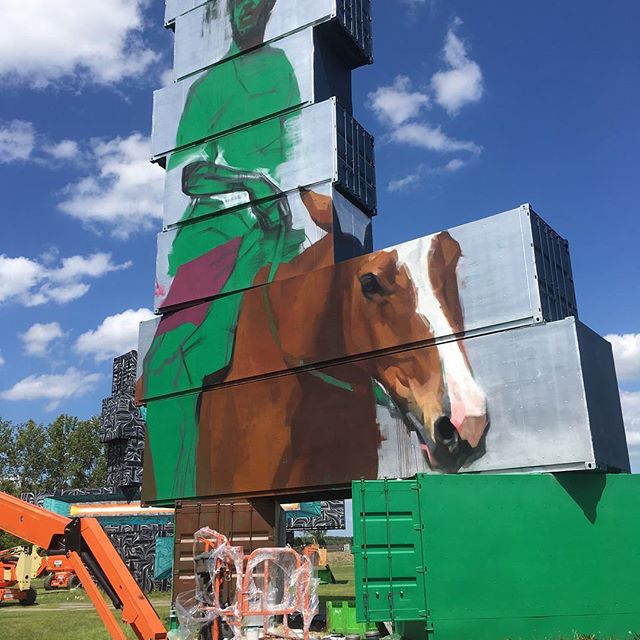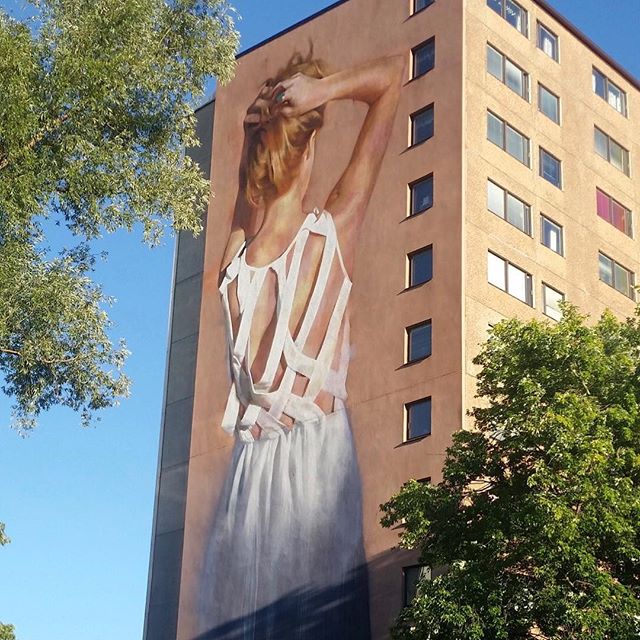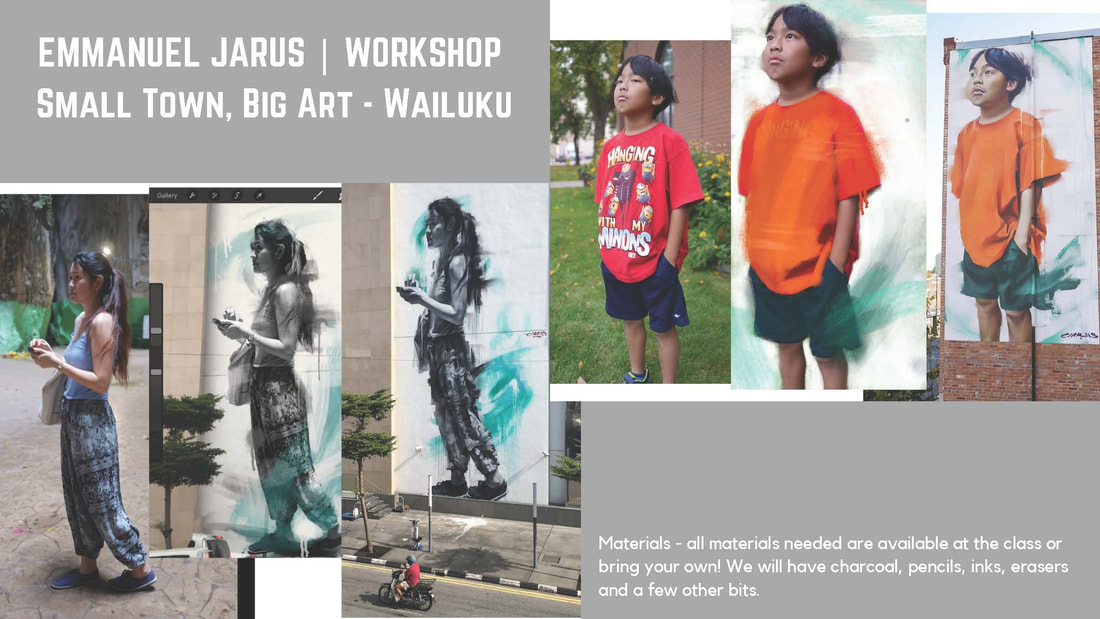Why as an artist are you drawn to Wailuku?
My manager (Ann-Marie Power), who lived on Maui and spends a lot of time there, has been looking for interesting mural opportunities on the island for a few years. Our focus shifted to Wailuku specifically after an inspiring meeting with Aloha Missions Lesley Cummings + Tamika Cables. Last November when Maui News put out the article that Wailuku had been awarded a grant by the NEA, she reached out to Maui County and had the chance to connect with Kelly McHugh to hear more about the ST*BA project. The proposal was then carefully put together. I am excited to visit Hawaii for the first time and feel honoured to have been awarded the opportunity to contribute an art piece in Wailuku as part of the ST*BA project.
In the past 3 years, where have you created art?
Kiev, Ukraine; Stockholm Sweden; Montreal, Quebec (CA); Detroit, Michigan (US); London, UK; Boulogne-sur-Mer, FR; Atlanta, GA (US); Saskatoon, SK (CA); Halifax, NS (CA); Penang, Malaysia; Wollongong, Australia; Dunedin, New Zealand; Ao Nang, Thailand; Toronto, ON (CA); Werchter, Belgium; Banff, AB (CA); Regina, SK (CA); Mexico City, DF (MX); Mumbia, India; Valparaiso, Chile; Port of Spain, Trinidad; Winnipeg + Brandon, MB (CA); Nacka, Sweden
In your experience, what distinguishing factors make one neighborhood stand out from the next?
I paint in a lot of different types of neighbourhoods. I almost prefer small towns + small residential communities the most because I get to connect with people on a deeper level.
How would you describe creative placemaking to someone who does not understand the term?
The best way I can describe creative placemaking, is by looking at a public park that’s been neglected over the years and no one really goes to any more. Taking that park space and making it more attractive and accessible. Placemaking could be improving the equipment or replacing the picnic tables. The creative part could be engaging the community in a process to paint the park facing walls, washrooms, or covered picnic areas with a local art org/school, or, asking the community’s help in planting a pollinator garden with native plants. Those nice new additions to the park that would attract more people to gather there, play and talk story.
How do you define success in your work?
This is a very difficult and always changing question, in some pieces I have certain goals, but for me painting is a deeper way of understanding life around me and solidifying my experiences in a visual form. The success is often in what is learned instead of an objective view of the final result. There are paintings that I love initially and dislike later on and paintings I dislike initially but find value later on in life. I find, like life, the process is more important than the final result.
How much research did you do in selecting a Hawaiian proverb for your initial proposal? What was that process like?
The research on the proverb involved stories of Hawaiian elders leading youth and inspiring cultural preservation and practices, and, how Hawaiians care for their kupuna. I attribute my knowledge of art to various influences, but mostly to my grandmother. The foundation of my art practice is inspired by her, and the road I've been on since has drawn support from both my immediate and chosen family. I enjoy painting in public space so I can understand its context and express it through my work; a process that is deeply rooted in observing life. In selecting from the Hawaiian proverbs - ‘Ike aku, ‘ike mai. Kōkua aku, kōkua mai. Pēlā ka nohona ‘ohana - Watch, observe. Help others and accept help. That is the family way - seemed in almost perfect alignment.












 RSS Feed
RSS Feed